Since Nice and Serious began in 2008, we’ve witnessed many ebbs and flows with the sustainability movement.
Between 2015 - 2019 in particular, the momentum felt unstoppable, like tailwinds were behind us.
But we perhaps we took this for granted – that the winds would always be on our backs, pushing us forward. It might explain why the situation we find ourselves in today feels so exacerbating. Political will is wobbling. Green budgets are being slashed. Public interest is on more seemingly urgent matters. After years of acceleration, it feels like we’re suddenly sailing against a stiff headwind.
The thing about headwinds is that they force you to focus. To get clear on where you're going and how you're going to get there.
We explored this in our recent workshop with comms experts Forster, unpacking how to define a clear sustainability power proposition – and how to bring it to life through creative that gets people on board.
So, how do you keep your comms afloat and on course in choppy waters? Here are the six steps to building a beautiful boat.
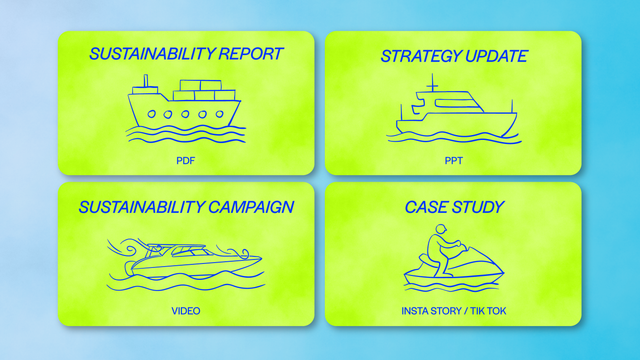
1. Choose a vessel
First, consider how much cargo you need to carry:
Doing a GRI-aligned sustainability report? You’ll need a cargo ship (PDF)
Communicating a sustainability strategy update? A yacht will do nicely (PPT)
Launching a sustainability engagement campaign? Set off in a speedboat (video)
Sharing a case study? A jetski is just what you need (social post).
Each vessel is appropriate for the volume and density of information you need to communicate. A report will never be as fast as a video. But a video cannot carry the volume of information, without sinking.
And sometimes, you might need to muster a flotilla: with different boats having different objectives, but all headed towards the same destination. For example a sustainability report, with short social content to highlight key stories of impact.
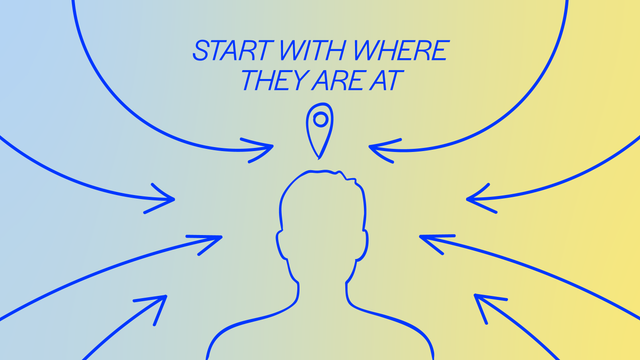
2. Pick a port near your passengers
You need to start your journey where your passengers are at. Make your message relevant to their daily lives to get them onboard for the journey.
For example, in a campaign we created for Tony’s Chocolonely, the brief was to get their customers engaged in the cocoa crisis. But the problem was, most people weren’t thinking about the cocoa crisis - they were thinking about chocolate. So we started there. The result was ‘The Chocopocalypse’, a social campaign that showed how the cocoa crisis could threaten our favourite sweet treat. Making a faraway issue feel immediate and relevant.
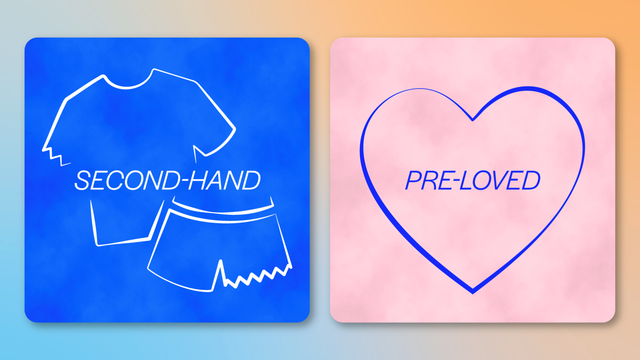
3. Sacrifice creates a drag
If your message sounds like sacrifice, it’ll slow down your progress as you get bounced around by the waves. Sustainability shouldn’t feel like a compromise.
For example, ‘Second-Hand’ suggests worn-out leftovers, but ‘Pre-Loved’ brings joy and story. ‘Meat-free’ sounds like something’s missing on your plate, but ‘plant-rich’ celebrates abundance.
When we worked with Byway, the challenge was selling flight-free holidays to Europe. The environmental benefit is clear, but it doesn’t sell flights. And train travel takes longer than flying. So we led with a different angle: skip the shortcuts, get more holiday.
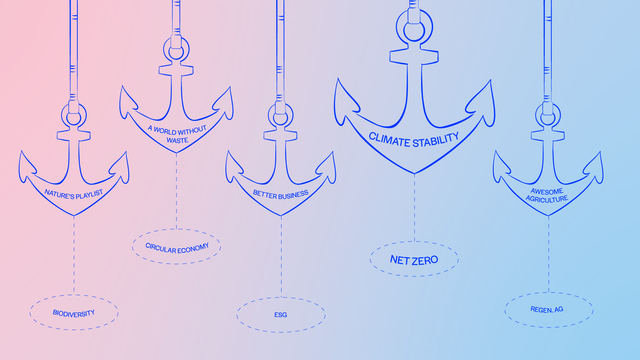
Step 4: Anchors Aweigh!
There are certain terms that, in the current context, can act like an anchor. In order for your campaign or comms to set sale, you need to weigh the anchor. While your strategy might be aiming for ‘Net Zero’, from a communications perspective it’s a dead weight.
So rather than accepting we have to use these scientific terms, we should think creatively about how they can be translated.
Instead of ‘ESG’, say ‘Better Business’. Instead of ‘Circular Economy’, try ‘A world without waste’. Instead of ‘regenerative agriculture’, try ‘awesome agriculture’. Make it more tangible, and your audience will come with you.
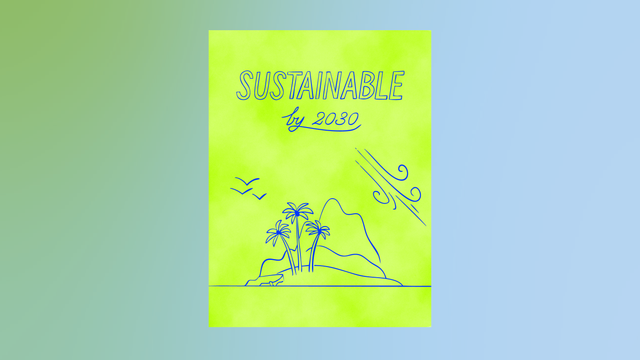
5. Sell the dream, not the destination
If you want people to buy a ticket, sell them the dream. “Sustainable by 2030” is like a holiday company advertising a map - accurate, but uninspiring.
People book holidays to escape the everyday - to feel the sun, the sand, and a cold drink in hand. Sustainability comms should tap into that same emotion: show people the better future, not just the plan to get there.
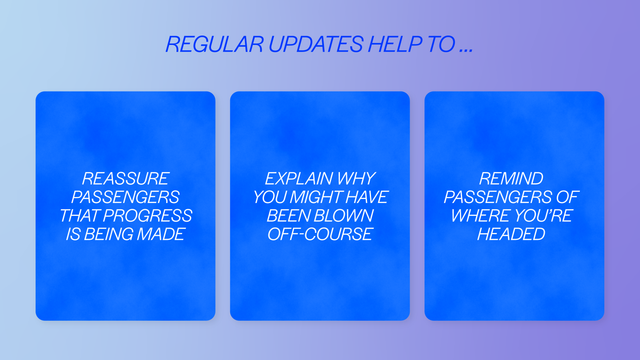
6. Keep updates from the captain coming
When the journey is long and the seas are rough, it’s reassuring to hear updates from the captain — passengers want to know that progress is being made. And if you’ve been blown off course, your passengers need to know you’re still heading in the right direction.
But that doesn’t mean rattling off facts and figures — that’s like a captain reading out coordinates. Instead, talk about the landmarks you’ve passed.
A case study is worth a thousand stats. Find the people — in your team or among your customers — whose stories show the progress you’re making.
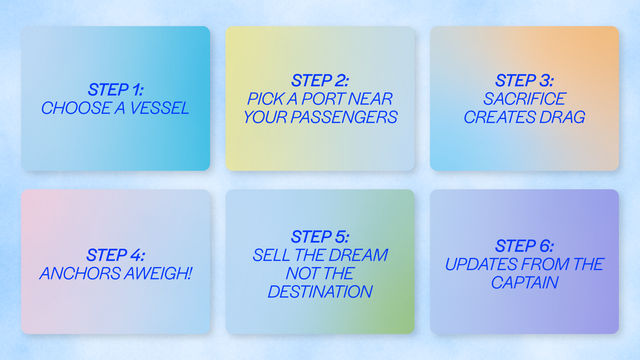
So, time to set sail?
Sustainability comms in 2025 demand more than good intentions. They need clarity, creativity, and conviction. In a headwind, it’s not enough to drift and hope. You need a clear destination, the right vessel, and messaging that resonates.
The seas might be rough, but by choosing your language carefully, meeting your audience where they are, and telling human stories over technical jargon, you can cut through the headwinds and keep momentum on your side.
If you need help building your boat, bring us onboard! hello@niceandserious.com
